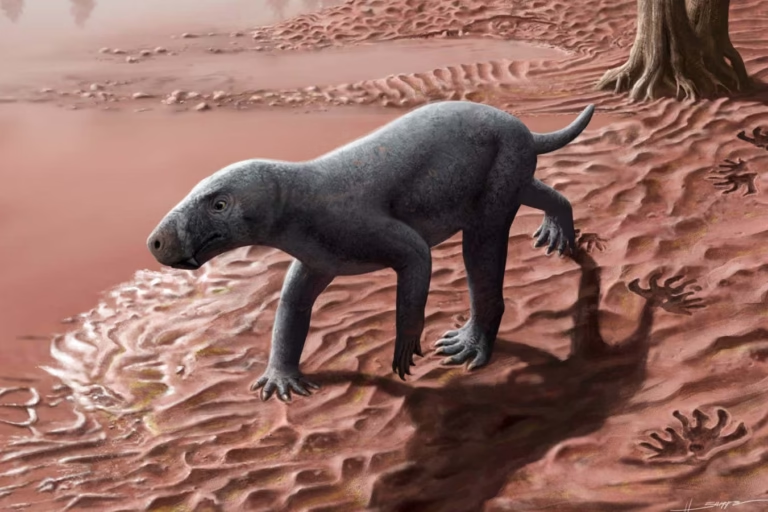
Reconstruction of the oldest known gorgonopsian
henry sutherland sharpe
The earliest known sabertooths hunted large prey 270 million years ago. The newly discovered remains could help explain how early mammal relatives became warm-blooded animals.
The first land predators usually hunted relatively small prey. But things changed about 273 million years ago, when an event known as the Olson extinction shook ecosystems around the world. Then, much larger terrestrial herbivores began to appear, and predators needed new weapons to dispatch such large prey, said Josep of the Miquel Crusafont Catalan Institute of Paleontology in Barcelona, Spain.・Fortuny says.
This may help explain why the fossilized partial skeleton of an ancient predator that Fortuny and his colleagues found on the Spanish island of Mallorca had saber-shaped teeth. These fangs are better suited for maiming large prey than for grabbing and holding small animals. “This was the first time we had access to this kind of tool for preying on herbivores,” Fortuny said.
Dating back an estimated 270 million years, this predator is the oldest known member of a group of carnivores known as gorgonopsians, all of whom had saber-shaped teeth. The largest gorgonopsids grew to several meters in length, with canine teeth reaching 15 centimeters in length. The Mallorcan gorgonopsian was smaller, measuring about 1 meter long and its canine teeth only 5 centimeters long. Fortuny said researchers are waiting to give the new gorgonopsian a name after analyzing the bones and teeth in more detail.
Ancient predators are important not only because of their age. At the time they roamed Mallorca, the island was part of a tropical supercontinent called Pangea, but all known fossils of gorgonopsids date back 270 million years. They come from areas of the world that were at high latitudes. This new discovery suggests that the gorgonopsian did indeed originate near the equator.
Adaptations developed there, such as the ability to efficiently hunt large prey, may have allowed them to control their body temperature in order to spread into cooler habitats away from the equator.
Fortuny says it’s important to better understand this process because gorgonopsids belonged to the therapsids, a group of animals that also includes mammals. “There’s a lot of debate about the first steps in thermoregulation in this group,” he says.
topic:
(Tag Translation) Animals

